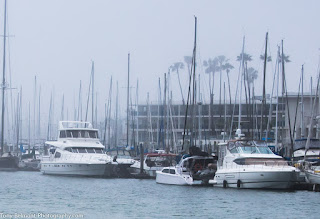A few things first about a super zoom, or any zoom - the edges of the images are usually not sharp. When shot wide open, the problem gets worse, and also at certain focal lengths the same problem. Also, prime lenses let in more light (can be f/1.2, f/1.4, f/1.8, up to around f/2.8). Zooms can go from f/3.5 - f/6 range or higher and will change at difference zoom ranges with the widest part of the zoom letting in the most light.
With the above in mind, and with the high ISO in modern cameras, as well as image stabilization, I figured shooting at f/5.6 - f/11 would not be much of a problem, especially in daylight. But I also wanted to see what would happen shooting in low light with a tripod. Usually with portraits, you want a sharp subject with the background soft or out of focus (or a solid color where the focus wouldn't really make much difference), so I was thinking this zoom might actually make a good portrait lens. The reviews say that 85mm to around 105mm are the best lenses for portraits (although there are those that will shoot them at anywhere from 35mm - 200mm), at least for close-up portraits. For full length, perhaps 35mm to 105mm would be a good range. This lens includes all those focal lengths. Below are a few test shots of myself with my new lens on a full frame camera. One additional note: if this lens was used on a cropped sensor camera, multiply it by 1.5 on a Nikon or 1.6 on a Canon with a cropped sensor.
The above photo was shot at ISO 1000, 1/6 second at f/5.6, 82mm. The below photo is a close-up crop of the image.
This photo was shot at 65mm at f/4.8 (the widest f stop for the focal length), with flash, 1/60 sec, ISO 1000. The below is a close-up crop. I'm about 7 feet from the background, which is enough to throw it out of focus a bit. At f/1.8 it wouldn't be even recognizable.
Some other things to keep in mind - from what I've read, some zooms work better on one camera body than another. There are zooms specifically made for full frame cameras and cropped frame cameras. Some zooms made for full frame cameras work fine on cropped frame sensor cameras, some do not. If they work, don't forget to multiply the zoom range by 1.5 or 1.6 or whatever factor is right for your camera. If you are using one of these, and you can visualize cropping about 10-15% off around the edges of the image, the cropped image should be sharp to the new edges.
As can be seen from the above, even though the lens is a superzoom (28-300mm), it is capable of shooting sharp images and focuses very well, at least up to 200mm. All photos were shot on a tripod with a wireless remote control, which allows the camera to focus before capturing the image.
Below is a photo of camera I was selling (to help pay for the new zoon lens), shot at 300mm on the new zoom, the top photo was cropped very little, the one under it was cropped a lot from the top photo. At 300mm the lens is very similar to a macro lens.
This was shot at ISO 1600 with flash, 1/60 sec at f/10.
Is a super zoom worth it? If you know how you are going to use it and it can do what you want (and maybe more), then definitely, in my opinion. And it is a lot less expensive than buying a 24mm, 35mm, 85mm, 105mm, 135mm, 200mm lenses. A 50mm f/1.8 lens is very sharp and very inexpensive. Also, an 85mm f/1.8 is not too expensive, but again, all those lenses would be a pain to carry around everywhere you go. If you had an assignment from a large company and were being paid well, then you would carry those with you, along with a variety of other prime lenses. But for day to day things, or if you can't afford the expensive prime lenses (and they can be very expensive) it would be a good lens to have. It could also be good for portraits and some wedding shots. Having high ISO's and image stabilization allows you to shoot in fairly low light even without having an f/1.2 - f/2.8 lens, but you do lose the really shallow depth of field.
The following photo was shot with the zoom lens a couple of days ago while riding my bike down Ballona Creek and through Marina Del Rey on the bike path. Because you wouldn't be able to see the full size image here, I've successively cropped the image to show that it is quite sharp as shot.
The settings were ISO 1000, f/8, 1/4000 sec, at 55mm.
One last note - while researching this lens, I found out the possibility exists that for the same exact lens one can be sharp while another not so much. Sometimes people would return an unsharp lens for another copy of it which would be perfect. Luckily, I bought this one used on Ebay at an excellent price, and it is exactly what I hoped it would be.
Hope you got something useful from this post, or at least enjoyed it. The past two years I had written about vaccines, but think I've covered everything I can about them. I will add new links about them from time to time, but meanwhile will be posting about photography. Thanks for stopping by.













No comments:
Post a Comment